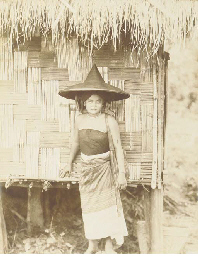What is an “epic?” A book that is long and big? A film that is intense and all-encompassing (and also long)? A story that teases out anything and everything about the human condition? Amitav Ghosh’s The Glass Palace (2000) is an epic, but it is not long (less than 500 pages in the paperback edition) and it is not all-encompassing. It is the very intimate story of three intertwined families representing three Asian cultures, Indian, Burmese and Malayan (Malaysian), and their individual and collective fates from 1885 to 1996.
The story begins in Mandalay, when Rajkumar, an orphaned Indian street kid, glimpses Dolly, a young servant in the household of the Burmese royal family, as the latter is being escorted out of Burma by the British. Their brief interaction burns in his mind and he structures his entire life from that point on assuming that they will meet again and join their fates together. He becomes a teak baron and boldly sets off to India to find her and bring her back to Burma.
This romantic tale is the foil to the story of Uma, a Bengali woman joined in a proper, practical marriage to an Anglo-Indian civil servant sent to watch the Burmese royal family in their exile; her life and that of her birth family makes the Indian side of the story. The third side of the triangle is the tale of Matthew: he is the son of Rajkumar’s Sino-Burmese business partner and mentor, who returns from his American education with a Scandinavian wife and sets himself up as the owner of a rubber plantation in Malaya.

A Malayan rubber plantation, c. 1930s

Teak harvest using elephants, 1925
The second generation of these absorbing families is where the real meat of the story comes: their friendships, romances, business alliances and decisions set against the backdrop of two world wars tell you everything you need to know about the human condition.
It is epic because it is the story of ordinary people caught between cultures and nationalities, defining themselves by their economic pursuits and their relationships with each other, being buffeted by decisions made endless rungs above them, and never losing hope or confidence in their own lives and futures (well, one does, but even that makes some weird sense). But The Glass Palace is no potboiler: what in lesser hands could be just another tale of love and loss set in an exotic location (one from column A, one from column B) becomes truly glorious in the hands of a gifted storyteller.

Indian army troops in Burma, 1944
In trademark Ghosh style, each detail is meticulously researched and all historical facts are unerringly accurate. If you want to learn about how teak is harvested or how rubber is grown and tapped, this is the place to find out. If you want to understand the precise workings of a small Malayan village, you’ve got it here. If you rub your hands thinking about precisely what sparked the revolt of elite Indian army units against their British masters, go no further. It is the delicate balance struck when the realistic detail of everyday life meets sweeping historical saga, when the view from a hospital window is described more precisely than the fall of an empire, that creates the drama and pathos of a true epic.



